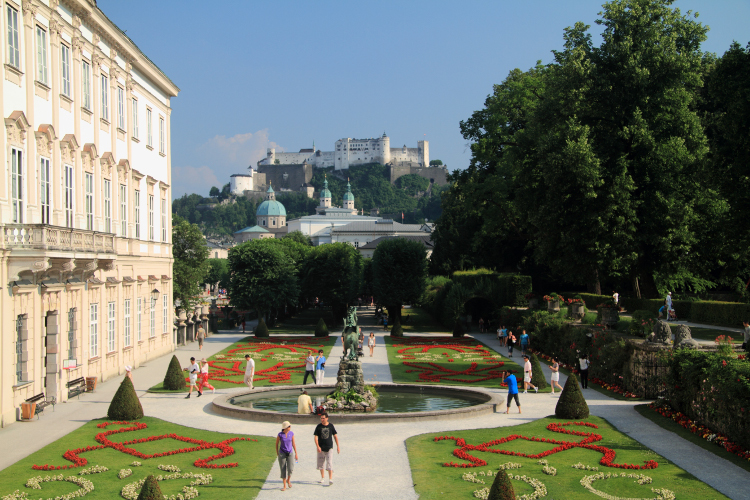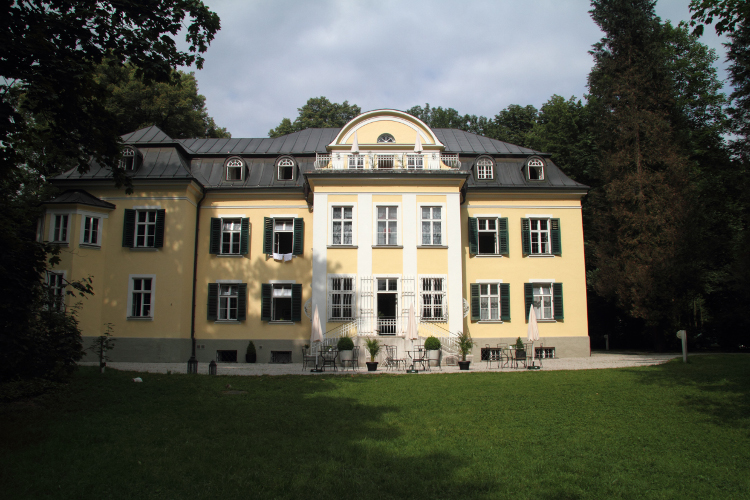
It can be difficult to move in Salzburg at times, which is why it is refreshing to escape the throngs for a while and follow the Salzach River as it curves gently south to Aigen and Villa Trapp. Nestled in its own park, the stout yellow mansion, built in 1863, is grand but not ostentatiously so – a fitting home for one of the city's most famous families.
Step inside as a hotel guest or on a guided tour and the first thing you clap eyes on is a sweeping staircase – not as opulent as the one in the film, but a feature nonetheless. "The Trapp children used to slide down this banister on their bellies", says manager Christopher Unterkofler. He points to a portrait hanging above the staircase. "Those are the real children: Rupert, Agathe, Maria, Werner, Hedwig, Johanna and Martina. In reality there was no Kurt, no Liesl". Pictured are the seven children from Georg von Trapp's first marriage to Agathe Whitehead, who died in 1922 of scarlet fever, the same year the baron moved to the villa and added the upper floor with servants' quarters.
"Agathe was the love of his life", says Christopher. "But Georg von Trapp was a practical man and knew the children needed a mother". Cue Maria. Two years after meeting the postulant nun and teacher from Nonnberg Abbey, the baron proposed and they were married in 1927 – he was 47, she was 22. "The nuns were pleased as Maria never really had the right temperament to become a nun. She was not in love but she liked the baron and came to love him in her fashion. And she always loved the children". Three more Trapp children followed from their marriage – Rosmarie, Eleonore and Johannes.
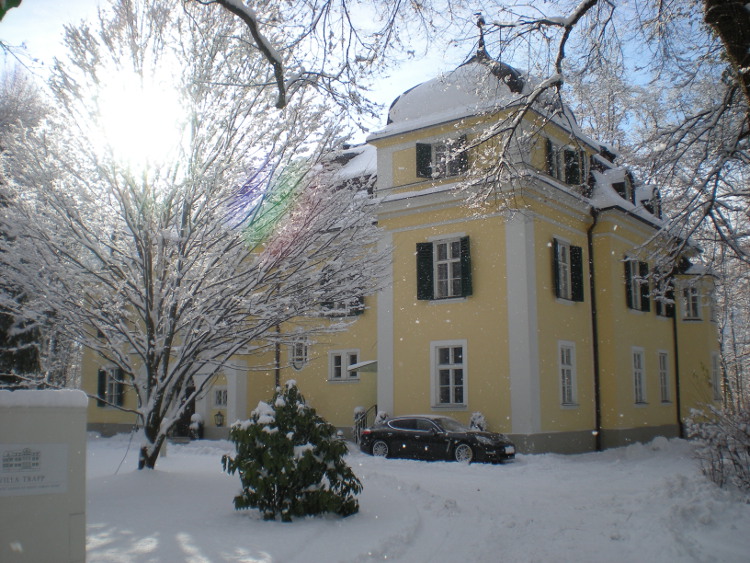
What swiftly becomes clear is that this is a house brimming with stories that unravel the truth behind the Hollywood legend. Photos line the walls and memorabilia fills the cabinets, including the admiral's whistle, model ship and bell. "Georg von Trapp was a first-class captain and one of the most highly decorated Austrian admirals of WWI", says Christopher. "The photo of him on a submarine was taken after he sank the French battleship Léon Gambetta, for which he received the highest honour: the Knight's Cross of the Military Order of Maria Theresa. He was a national hero who dreamed about sailing around the world with his family – a dream he never realised after losing much of his fortune during the Great Depression".
When the film was released in 1965, the children were shocked about how their father was portrayed. "He was a kind family man, totally devoted to his children, not stern like in the film. And he never made the kids march", says Christopher. The famous whistle was a means of calling the kids in from play in a pre-mobile age, with each child responding to a different note. Education was paramount – the children were taught languages and how to play an instrument. Both Maria and Georg von Trapp believed that music brought people together and this was always a house filled with song. During the world economic crisis in 1935, the family let out the downstairs rooms to seminarists, one of whom was Father Wasner. The Catholic priest does not appear in the film but his part was important – he spotted the family's musical talent and became the director of the Trapp Family Choir, playing a pivotal role in their success as a touring act.
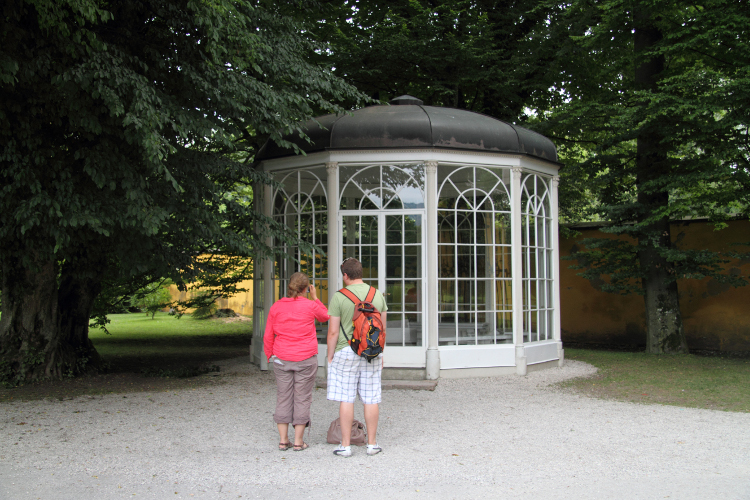
Then came the Anschluss, the German annexation of Austria in March 1938. The captain, a staunch anti-Nazi, declined a commission in the German Navy and refused to sing at Hitler's birthday party. As the darkness drew closer, the family decided to leave Salzburg for the United States via Italy. "But the Trapps never looked into the mouths of Nazi pistols", Christopher admits. "They simply locked up and took a train to South Tyrol. The next time you watch the movie, look closely at the closing scene with the Bavarian Alps and you'll notice a small black house, the Eagle's Nest. If they had gone that way, they would have walked straight into Hitler's path".
During WWII, Villa Trapp was the Salzburg headquarters of Heinrich Himmler, the dreaded Reichsführer of the SS. Gone was the cheerful song and children's laughter, and in its place were vicious dogs, swastikas and a high wall concealing what went on behind it. "He had the men who built that wall shot", Christopher says. "When Himmler fled in 1945, the Trapps wanted the house to go to the Missionaries of the Precious Blood to eradicate his evil spirit with the power of prayer".
What became of the Trapps is a happy ending befitting of Hollywood. The family arrived in the States with just three dollars to their name and successfully began a new life. If their heavy-going choral music didn't go down well in America at first, they soon learned to adapt their repertoire, making it more folksy and fun.
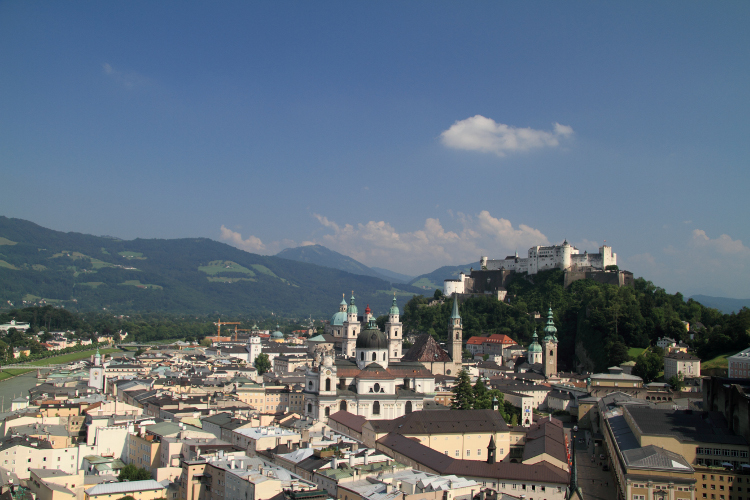
Fast forwarding 70 years, daughter Maria returned to the villa in 2008. The home had been lovingly restored to its former glory and converted into a guesthouse by Christopher and his wife, Marianne. Maria's greatest wish during her brief visit to Salzburg was to go up to the peak of Gaisberg, to feel the spirit of her Austrian home and gaze out across the hills that were once alive with the sound of the Trapp family music.
If you are still craving more of The Sound of Music, here are our top five for your own self-guided tour of the movie locations in Salzburg.
